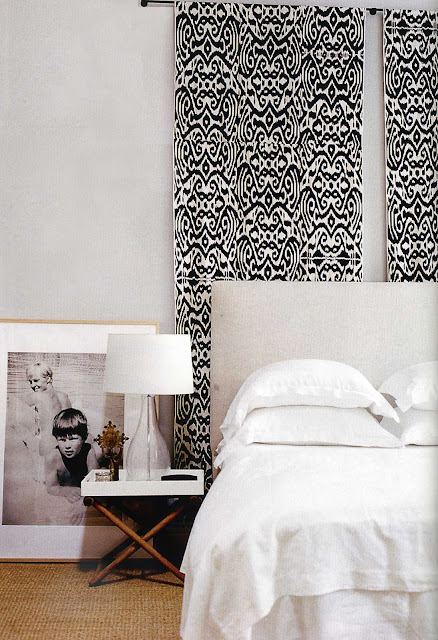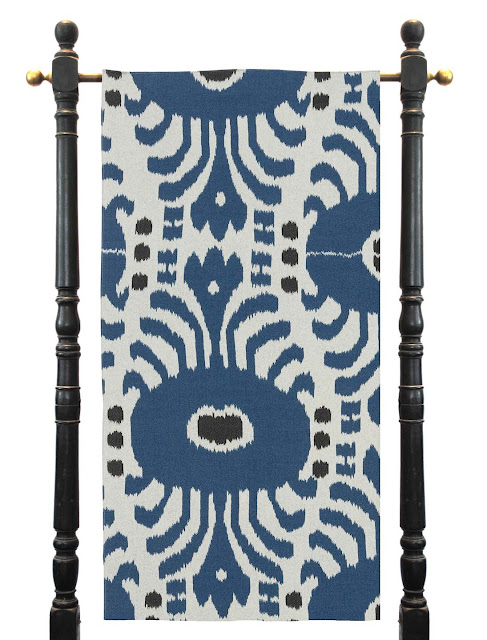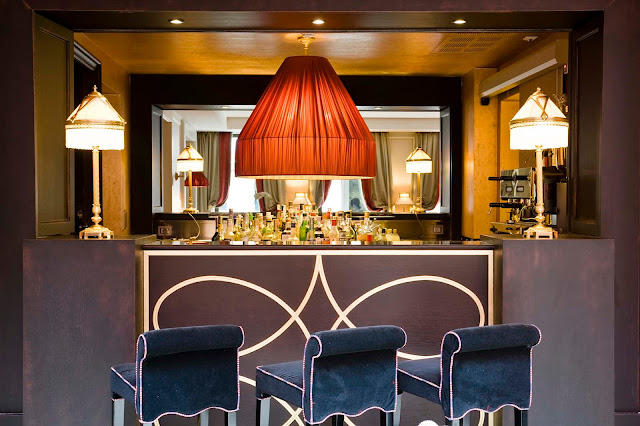New York artist/designer Madeline Weinrib pioneered traditional ikat designs in vibrant and chic and gorgeous modern colors over a decade ago.
Today, her iconic Ikat pillows are the favorites of top interior designers around the world. Her Ikat weave designs have become a cult--and it seems every creative interior today has to have at least one Madeline Weinrib Ikat pillow or textiles or outdoor fabrics.
With silk and cotton—and her vibrant artist’s eye—Madeline spins beauty and style that add vibrant life to all interiors.
This week, in conversation with Madeline about her Ikat patterns, we hear her ideas, inspirations, and news. Madeline’s insights and knowledge add so much to an understanding of the intricacies and beauty of Ikat weaves.
Today, her iconic Ikat pillows are the favorites of top interior designers around the world. Her Ikat weave designs have become a cult--and it seems every creative interior today has to have at least one Madeline Weinrib Ikat pillow or textiles or outdoor fabrics.
With silk and cotton—and her vibrant artist’s eye—Madeline spins beauty and style that add vibrant life to all interiors.
This week, in conversation with Madeline about her Ikat patterns, we hear her ideas, inspirations, and news. Madeline’s insights and knowledge add so much to an understanding of the intricacies and beauty of Ikat weaves.
Come with me to learn everything about Ikats below.
“I’ve always loved the craft of Ikat, and the tradition of hand-dying and hand-weaving. It’s a very ordered way of working, and the finished designs are like a miracle. Each one is different. I’ve working with Ikats for almost two decades, and I am still in awe of how each weaver masters this craft.” — Madeline Weinrib
“In Central Asia where my Ikats are custom woven in my colors, the dyers and weavers are experts of the most refined abilities. In this Silk Road region with centuries of rich textile history they are considered masters. And because of the particular style of hand-dying the silk/cotton yarns—each pattern is slightly different and all are richly beautiful.” — Madeline Weinrib
“My colors are modern and new. They are not at all traditional in Ikat weaving. I work constantly with my weavers and dyers to keep track and identify the specific dyes so that they are re-created exactly as I design them. This is my biggest challenge as I am obsessed with the precise shades I design. My shades are my signature, and they must be reproduced exactly as I see them.” — Madeline Weinrib
“In traditional Ikat weaving of remote Central Asia, where nomads and city weavers prized their crafts, favored colors are very vivid. The weavers love emerald and crimson and chrome yellow and rose pink. They find my colors a bit dull, and are puzzled when I specify indigo with ivory. For them, the more colors they weave, the more valuable is the fabric. I use colors in a minimal way and I’ve distilled the woven patterns to show the mysterious beauty and allure of Ikat. That’s my signature.” — Madeline Weinrib
“My palette is modern, contemporary and fresh—in different styles of handwoven authentic Ikats. For me as an artist and designer it is important to reflect colors and styles of today, and this period of design. Today, now, but with a timeless feeling. It’s my ideology to work with current ideas. If in 100 years or 500 years people are looking at pictures of my textiles, I want them to look beautiful still, and to be immediately identified as made in the early twenty-first century.” — Madeline Weinrib
“Traditional looms that my fabrics are woven on are 18 inches wide, so my pillows always have seams. At first I though it was a mistake, but now the mis-matched patterns and the seam are signatures of my pillows. I treat them as paintings or sculpture. For my customers, they will be come heirlooms. That makes my very happy.” — Madeline Weinrib
Each pillow has been hand-sewn in New York and finished with stitched suede piping, Belgian linen backing, and mother- of-pearl buttons.
70% silk, 30% cotton. Goose down filler.
Variation in color or texture is inherent to Madeline’s handmade, handwoven ikats.
Each pillow is individual and one-of-a-kind.
CREDITS:
Photography in this feature courtesy of Madeline Weinrib.
Where to Find Madeline Weinrib:
NEW YORK SHOWROOM
126 5TH AVE, FLOOR 2
NEW YORK,NY 10011
212.414.5978
SAN FRANCISCO SHOWROOM
101 HENRY ADAMS STREET, #101
GALLERIA DESIGN CENTER
SAN FRANCISCO, CA 94103
415.626.1103
www.madelineweinrib.com
“I’ve always loved the craft of Ikat, and the tradition of hand-dying and hand-weaving. It’s a very ordered way of working, and the finished designs are like a miracle. Each one is different. I’ve working with Ikats for almost two decades, and I am still in awe of how each weaver masters this craft.” — Madeline Weinrib
“In Central Asia where my Ikats are custom woven in my colors, the dyers and weavers are experts of the most refined abilities. In this Silk Road region with centuries of rich textile history they are considered masters. And because of the particular style of hand-dying the silk/cotton yarns—each pattern is slightly different and all are richly beautiful.” — Madeline Weinrib
“My colors are modern and new. They are not at all traditional in Ikat weaving. I work constantly with my weavers and dyers to keep track and identify the specific dyes so that they are re-created exactly as I design them. This is my biggest challenge as I am obsessed with the precise shades I design. My shades are my signature, and they must be reproduced exactly as I see them.” — Madeline Weinrib
“In traditional Ikat weaving of remote Central Asia, where nomads and city weavers prized their crafts, favored colors are very vivid. The weavers love emerald and crimson and chrome yellow and rose pink. They find my colors a bit dull, and are puzzled when I specify indigo with ivory. For them, the more colors they weave, the more valuable is the fabric. I use colors in a minimal way and I’ve distilled the woven patterns to show the mysterious beauty and allure of Ikat. That’s my signature.” — Madeline Weinrib
“My palette is modern, contemporary and fresh—in different styles of handwoven authentic Ikats. For me as an artist and designer it is important to reflect colors and styles of today, and this period of design. Today, now, but with a timeless feeling. It’s my ideology to work with current ideas. If in 100 years or 500 years people are looking at pictures of my textiles, I want them to look beautiful still, and to be immediately identified as made in the early twenty-first century.” — Madeline Weinrib
“Traditional looms that my fabrics are woven on are 18 inches wide, so my pillows always have seams. At first I though it was a mistake, but now the mis-matched patterns and the seam are signatures of my pillows. I treat them as paintings or sculpture. For my customers, they will be come heirlooms. That makes my very happy.” — Madeline Weinrib
All About Madeline Weinrib Ikat Pillows
Madeline is constantly adding new patterns of Ikat into her collection and each one boldly offers permutations of color and pattern that define her work.Each pillow has been hand-sewn in New York and finished with stitched suede piping, Belgian linen backing, and mother- of-pearl buttons.
70% silk, 30% cotton. Goose down filler.
Variation in color or texture is inherent to Madeline’s handmade, handwoven ikats.
Each pillow is individual and one-of-a-kind.
News: Madeline Weinrib Introduces Camilla Cotton Carpets
New multi-colored floral carpets in ten different styles are inspired by traditional Persian flower paintings and classical Moghul floral motifs. The pretty flowers are also reminiscent of Botticelli’s delicate floral embellishments. Colors range from ivory and beige to pale blue, red, and green.CREDITS:
Photography in this feature courtesy of Madeline Weinrib.
Where to Find Madeline Weinrib:
NEW YORK SHOWROOM
126 5TH AVE, FLOOR 2
NEW YORK,NY 10011
212.414.5978
SAN FRANCISCO SHOWROOM
101 HENRY ADAMS STREET, #101
GALLERIA DESIGN CENTER
SAN FRANCISCO, CA 94103
415.626.1103
www.madelineweinrib.com


















































































